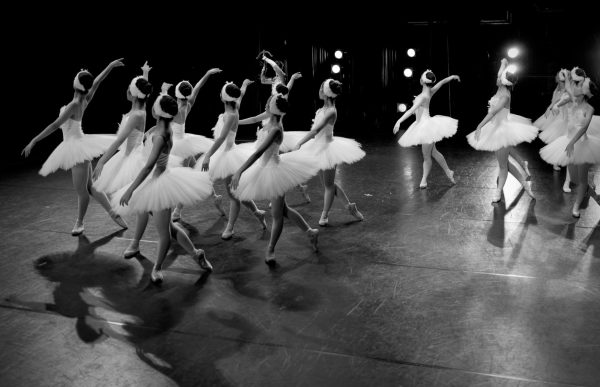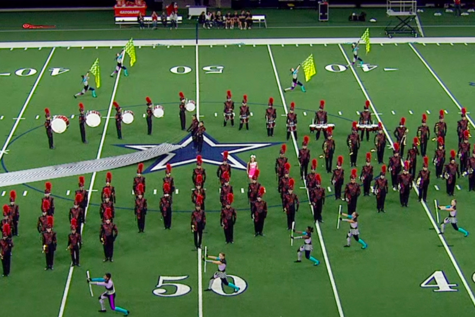Success in unfaithfulness, The Count of Monte Cristo
February 23, 2022
For thousands of years, mankind has been writing down its stories. Dramaticized retellings of events, real and fictional, have been written down for us to continue to enjoy. Mankind, ever changing and evolving, would find new ways to tell stories, transferring these written stories to new mediums of entertainment, and with the invention of the motion picture, books being adapted into films has become one of the most influential practices in history.
Many beloved films have been adaptations of books. Films like The Silence of the Lambs, Jaws, and Forrest Gump have become so popular that many, especially those born after their release may not even know they are adaptations. The list doesn’t end there, Stephen King’s stories alone have served as the basis for many beloved films such as The Shining, Stand By Me, and The Shawshank Redemption, and, of course, we cannot forget that perhaps the greatest film of all time, The Godfather, was an adaptation as well.
What made these films great, and what makes a film adaptation good in the first place? The answers to these have divided fans for years, as book loyalists heavily criticize any adaptation that strays in any way from the books, while others prefer creative liberties that either change the original for the better or take the story in a slightly different direction. In truth, there is no correct approach to adapting a written work, but for many years, movie writers and directors have tried to maintain as much faithfulness to their adapted books as possible.
When a book strays too far from its source, it often loses whatever made the book special in the first place, such as Disney’s fairly recent release, Artemis Fowl, which disappointed both book fans and casual audience members alike, but sometimes, writers and directors are able to transform a classic narrative almost completely, which still maintaining the same magic of the book or even improving upon the original narrative. Such an event has happened so rarely, that I can scarcely recall any other film than The Count of Monte Cristo (2002) that demonstrates it.
The Count of Monte Cristo is an adaptation of the French novel Le Comte de Monte-Cristo by Alexandre Dumas, a serial which was released in increments from 1844 to 1846. The book follows Edmond Dantes, as he is falsely sent to prison for treason, escapes prison with the help of Abbe faria, becomes unimaginably wealthy, and executes his revenge on those who put him in prison. It is a fascinating, satisfying, and bittersweet narrative that had been adapted many times before 2002, yet none managed to capture the same magic. Perhaps most incredible of all is the fact that the film barely follows the events of the book. Many characters are removed, smaller narratives are cut out and so much more. The way Dantes initially meets Napoleon is different, the circumstances regarding his arrest are different, and after his escape from prison, which is also different, the methods to which Dantes gains his wealth and revenge barely resemble the book.
On the surface, it seems that this film should be nothing but a complete failure, but, in reality, it is an incredible work of cinema. In fact, the book and film are so different that each is good for entirely different, even opposite, reasons. The one drawback of the films is that it is obvious that it was condensed into a single two hour production, wisely deciding to cut unnecessary events, and in the original serialization of the novel, Dumas released the story over the course of years, allowing him to craft an extremely complex and almost convoluted storyline. To those who have read the novel, it feels as if the movie is an overcorrection of the book, and instead of audiences having to decide which is better, they instead have to decide if they want the “too simple” or “too complex” narrative. This isn’t to say that either one is bad, they aren’t, but neither seem to find the middle ground needed to tell their story perfectly.
A film having this kind of relationship with its source material is extremely rare, and one I hope to look out for more often, and as a fan of The Count of Monte Cristo, and all its adaptations, I highly recommend reading the book and watching the 2002 film, so that you may experience it for yourself.













Fermain • Jan 5, 2023 at 4:02 am
One of the worst movies I’ve ever watched. The weak screenwriter believed he was writing a masterpiece like the odyssey by Homer, but he wrote a mediocre film.
The movie is full of holes
Does the illiterate sailor become a captain? He has to deal with accounting and customs.
Because Villefort asked Fernand to kill his father, if he could get rid of him by asking any royalist. and they would accept it for free. Just remember that Bertuccio’s brother was killed by the royalists.
Would a man as experienced as Villefort and with over 10 years experience fall for such a silly trick? He was supposed to laugh at Edmond and deny everything.
How did the count get a garrison and hide it in the villefort’s house without him noticing? How did the Count learn of Clarion’s death? because edmond found out about benedetto through bertuccio. Those traps against Danglars and Fernand were so obvious that anyone would suspect them. The guy uses the treasure as bait, it was obvious it was a trap.
A count from some random place appears out of nowhere in Paris and French high society appears there. The count asked Allbert to help him introduce him to French high society.
A man out of nowhere saves Albert from a group of dangerous thugs who should have been armed to the teeth and he would be killed instantly. that instead of calling the police. It was clear that he set it up and Albert should have been suspicious.
Fernand is a rich nobleman, his father never allowed him to work with the mortal or be friends with a simple sailor like Edmond or marry Mercedes. He would have an arranged marriage like Albert and Valentine in the book. At most Mercedes would be his lover.
Let’s not forget that for Hollywood a man never leaves his wife and family to be with another woman. The man in hollywood movies only loves one woman, he never leaves her to marry another
The film/miniseries Admiral (2008) by Andrei Kravchuk tells the true history of admiral Alexander Kolchak and his young lover Anna Timiryova. And he abandoned his family for his mistress.
But for hollywood, a man never abandons a woman.
I mention this because of haydee’s plot.